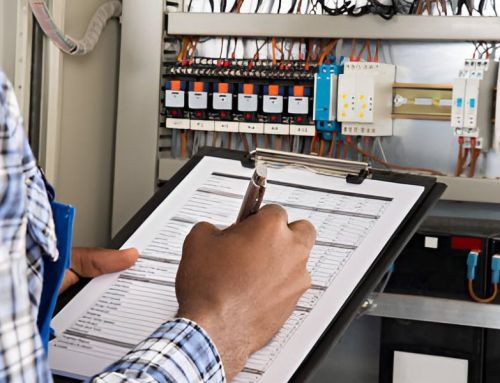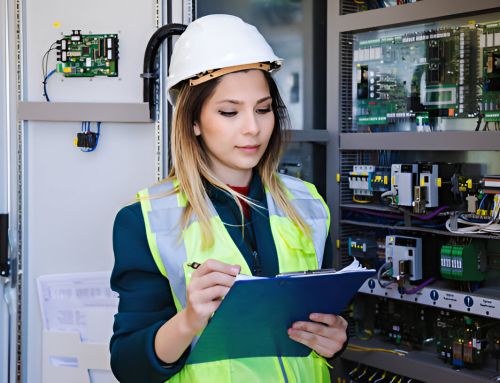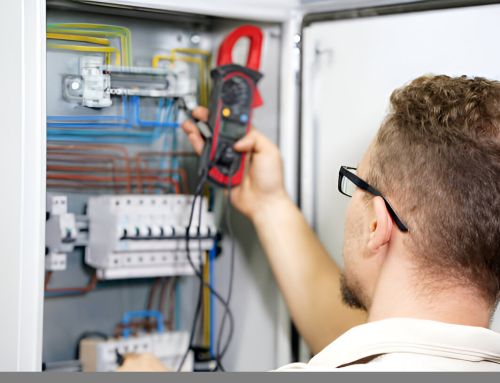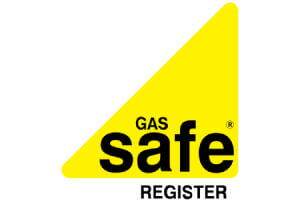
In the context of ensuring electrical safety and compliance in newly constructed buildings, the role of Electrical Installation Condition Reports (EICR) becomes pivotal. These mandatory assessments serve a critical function by verifying that all electrical installations meet stringent regulations and standards before the building is deemed safe for occupation. However, the implications of these requirements extend beyond mere regulatory compliance. They influence architectural designs, construction materials, and even the long-term sustainability of a building. Given the evolving nature of electrical standards and the increasing focus on energy efficiency, one must consider how current practices align with future advancements in technology and environmental conservation. Let’s understand EICR Requirements for Newly Constructed Buildings.
Understanding EICR: What It Means for New Constructions
In the context of newly constructed buildings, the Electrical Installation Condition Report (EICR) is a critical compliance document that assesses the safety of electrical systems. This report serves as a formal documentation of the electrical safety standards upheld during the construction and completion of the building.
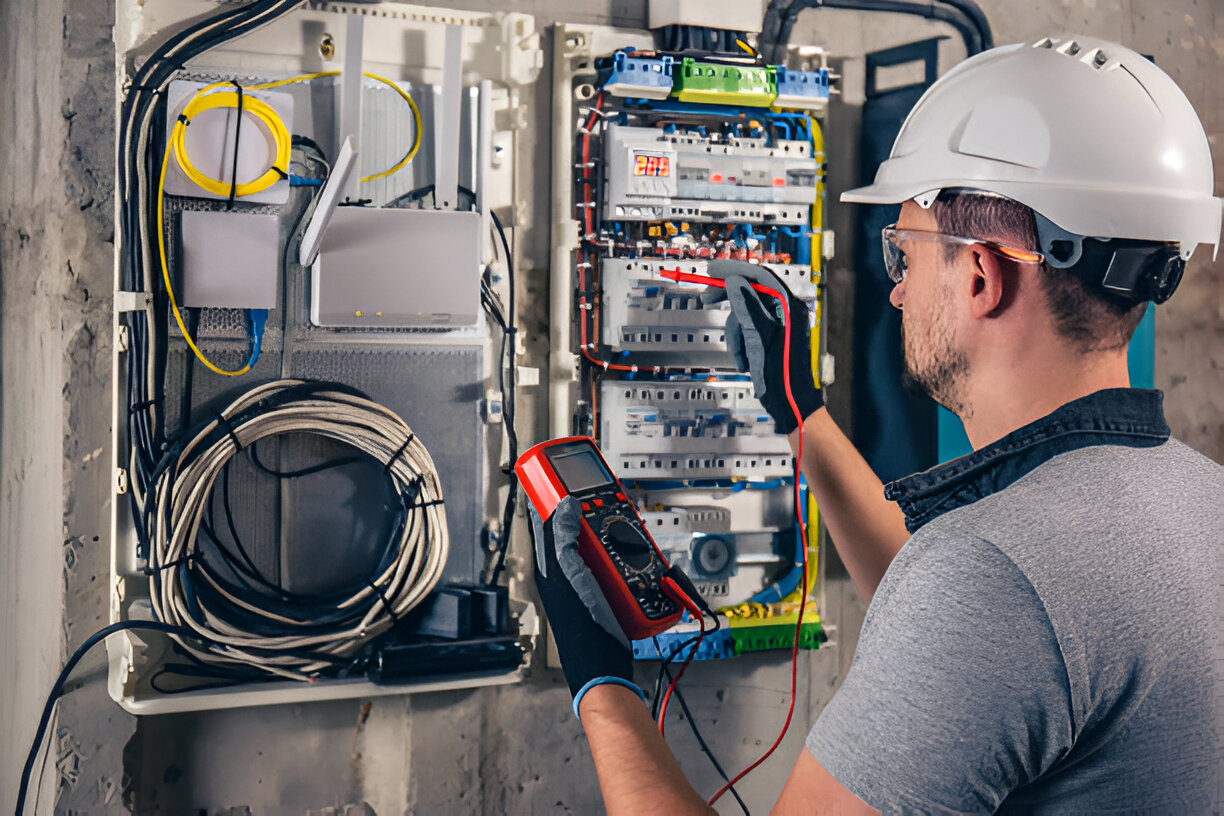
The significance of EICR cannot be overstated as it ensures that all electrical installations adhere to the current safety norms and regulations.
EICR’s role extends beyond mere compliance; it is a proactive measure to prevent electrical hazards. The report involves a thorough inspection and testing of the building’s electrical systems and components. This includes checking for any deterioration, defects, or non-compliance with the standard wiring regulations.
The outcomes of these inspections help in identifying potential electrical risks before they evolve into serious safety issues.
For professionals in the construction and electrical engineering sectors, understanding the intricacies of EICR is essential. Mastery of this compliance process not only enhances safety management but also underpins the reliability of electrical installations in new constructions.
The EICR, therefore, plays a fundamental role in certifying that newly constructed buildings are safe, secure, and ready for occupancy, emphasizing its critical place in the construction and electrical safety ecosystem.
Mandatory EICR Regulations for Newly Built Properties
To ensure electrical safety and compliance, newly constructed buildings must adhere to mandatory EICR regulations. The Electrical Installation Condition Report (EICR) is a comprehensive assessment of the electrical systems within any building structure, specifically focusing on safety and adherence to current wiring standards.
For newly built properties, these regulations are particularly stringent, reflecting the latest in safety protocols and technological advancements. New build compliance demands that all electrical installations, from the main supply through to final circuits, meet rigorous standards set forth by national electrical codes.
This involves meticulous inspection and testing of all components to detect any deviations or potential hazards that could compromise the safety of the building’s occupants. Developers and construction companies need to integrate these checks early in the building process to ensure seamless conformity.
While there are EICR exemptions applicable to certain types of buildings and scenarios, newly constructed residential and commercial properties typically do not qualify for these exemptions. Instead, they must undergo a full EICR before they can be deemed compliant.
This underscores the importance of planning and executing electrical installations with precision, as any oversight can delay the certification process and affect the overall project timeline.
When Should an EICR be Conducted in a New Building?
Understanding the optimal timing for conducting an Electrical Installation Condition Report (EICR) in newly constructed buildings is paramount for maintaining compliance with national safety standards.
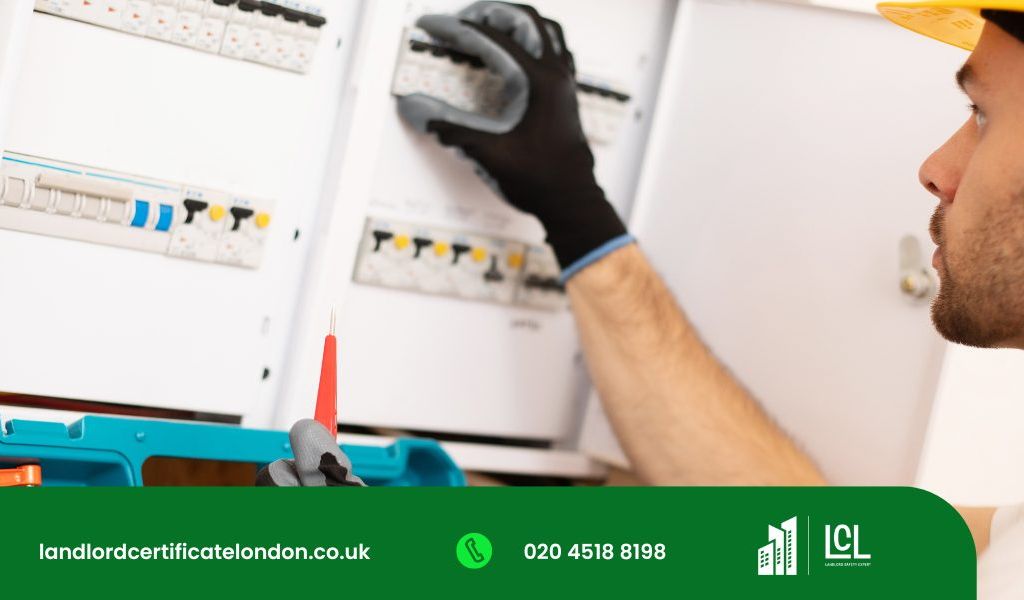
The EICR is a critical document that assesses the safety of electrical installations, providing a benchmark for future inspections and ensuring that all electrical systems are up to code from the outset.
Here are key considerations for EICR timing in new build inspections:
- Upon Completion of Electrical Installation: Ensure an EICR is conducted immediately after the installation team has completed their work. This initial inspection verifies that the installation adheres to the latest safety standards and regulations.
- Before Obtaining Occupancy Permit: It’s crucial to perform an EICR before the building receives its occupancy permit. This step confirms that the electrical systems are safe for use and can support the intended load demands.
- Post any Major Electrical Modifications: If significant modifications are made during the construction process, a subsequent EICR is necessary to certify these changes’ compliance.
- Pre-Warranty Expiration: Conduct an EICR before the builder’s or installation warranty expires to address any potentially overlooked issues.
- Scheduled Intervals Post-Construction: Establish a routine EICR schedule, typically every 5 years, to monitor and maintain electrical system integrity over time.
Adhering to these EICR timing guidelines ensures that newly constructed buildings remain safe, functional, and compliant from day one.
Key Electrical Safety Standards for New Constructions
Adhering to key electrical safety standards is essential for ensuring the safety and compliance of newly constructed buildings. These standards encompass the fundamental requirements for electrical installations and emphasize energy efficiency and sustainable materials. This dual focus aims to secure both environmental sustainability and occupant safety, which is pivotal in contemporary construction practices.
Firstly, the installation procedures must align with the latest regulations that advocate for reduced energy consumption and carbon footprints. This includes the incorporation of high-efficiency wiring, energy-saving lighting solutions, and advanced circuit design that minimizes energy loss. Builders and developers are urged to source materials that have low environmental impact, are recyclable, and are produced through eco-friendly processes.
Moreover, compliance with local and international electrical codes ensures that the electrical systems are robust, reliable, and capable of handling the intended load without risk of overload or failure. These codes dictate specific standards for system design, including the calculation of load, distribution layout, and safety devices such as circuit breakers and ground fault circuit interrupters (GFCI).
Adoption of these guidelines not only facilitates regulatory compliance but also enhances the marketability of the buildings, positioning them as modern, safe, and environmentally responsible.
What to Expect During an EICR Inspection for New Buildings
During an Electrical Installation Condition Report (EICR) inspection for newly constructed buildings, a qualified electrical inspector methodically evaluates the safety and compliance of all electrical installations against stringent regulatory standards.
The process is crucial to ensure that every component of the building’s electrical system meets the latest safety requirements and is capable of handling expected loads without risk of failure.
The following are key elements to anticipate during the inspection:
- Visual Examination: Initial inspection to identify overt flaws or deviations from expected installation practices.
- Circuit Testing: Detailed testing of circuits to verify integrity and safety, including isolation tests and earth fault loop impedance measurements.
- Assessment of Protective Devices: Checking if circuit breakers and other protective devices are appropriately rated and functional.
- Identification of Common Inspection Issues: Including incorrectly rated wiring, potential overload scenarios, and inadequate earthing.
- Recommendations for Electrical System Upgrades: Proposals based on the latest technology and safety standards to enhance system reliability and compliance.
This thorough scrutiny ensures the electrical integrity of new buildings, safeguarding against potential hazards and future compliance complications.
Ensuring Compliance: Choosing the Right Electrician for EICR in New Builds
Selecting the right electrician for an Electrical Installation Condition Report (EICR) in new constructions is paramount to ensuring that the building’s electrical systems comply with national safety standards.

When embarking on this selection, the primary considerations should be the electrician’s electrical qualifications and contractor experience, as these factors significantly influence the quality and reliability of the EICR.
First, verify the electrician’s certifications. A qualified electrician for EICR should possess accreditations from recognized industry bodies, demonstrating their proficiency and adherence to the latest electrical safety protocols.
]Credentials such as NICEIC, ELECSA, or equivalent are essential indicators of a technician’s capability to perform rigorous inspections and manage potential complexities in new construction environments.
Furthermore, evaluate the contractor’s experience specifically in new buildings. Experience in this context refers not just to years in the field but also to relevant projects completed.
An electrician with a history of working on new constructions will be more familiar with contemporary electrical systems and building codes, which are critical for ensuring that installations meet current regulatory standards.
Choosing a seasoned professional ensures a thorough and compliant EICR, mitigating risks and enhancing safety.
Conclusion
In conclusion, adherence to EICR requirements is crucial for ensuring electrical safety and compliance in newly constructed buildings. Through meticulous inspections and testing, potential risks are mitigated, and alignment with the highest standards of wiring and sustainable practices is confirmed. Selecting a qualified electrician experienced in new construction standards is essential for maintaining these rigorous safety protocols. Continuous compliance through regular EICR assessments supports both safety and the long-term integrity of building infrastructures.
Our Pricing
| Our Electrical Safety Certificate Prices |
|---|
| Studio Apartment £67.99 |
| 1 – 3 Bedroom £94.99 |
| 4 Bedroom £104.99 |
| 5 Bedroom £139.99 |
Check Out Our Other Services
| EICR | Commercial EICR | Emergency Light Certificate |
|---|---|---|
| Electrical Diagnostic | PAT Testing | Fuse Box Installation |
About the Author: LandlordCertificate
Related Posts
Get Social
Recent Posts
- Domestic Fire Alarm Installation: Protecting Your Home and Family with Reliable Fire Safety Systems
- Asbestos Management Survey Report: Complete Guide for Property Owners and Duty Holders
- Emergency Lighting Test Certificate: A Complete Guide for UK Properties in 2025
- Portable Appliance Testing Cost in 2025: Everything You Need to Know
- Energy Performance Certificate Requirements Explained for 2025


